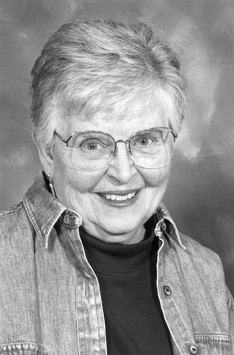Rabbitbrush Rambler: Valley’s religious organizations

Betwixt wild fire, wind, drought, and heat, a lot of people who never prayed before may be doing so right now. How many profess a religious affiliation is a separate question.
One of the provisions of the First Amendment to the Constitution of the United States provided that “Congress shall pass no law respecting an establishment of religion, or prohibiting the exercise thereof.” Given that liberty, people who settled the San Luis Valley participated in a wide variety of denominations.
If we exclude Native American religions, the churches in New Mexico were Roman Catholic prior to New Mexico’s separation from Mexico in the 1840s. Not surprisingly thus, nearly all who came early into this Valley from New Mexico were Roman Catholic, although some men who had married into the Church might have been less religiously devoted than their spouses. In addition, many Native American captives had been baptized and married in the Church.
Also, in the villages there were small numbers of unaffiliated Jewish merchants, aging ex-trappers, and military personnel of undeclared faith. Before a church structure was built, families prayed in their homes or in private oratorios, and Penitentes had active moradas that provided community services and religious activities. By 1857, Conejos had its first resident priest, and scattered parishes began to have the services of its priests, soon joined by teaching nuns.
In the mid-1860s following the Civil War, change began. There were a very small number of itinerant preachers, like the well-known Methodist John Dyer who had visited homes in the Valley, but the first active Protestant church activity was Presbyterian in the area near Antonito in the 1860s. Pastors and their wives also were especially interested in education as well as conversions.
After the Homestead Act and the end of the Civil War, farmers and ranchers began to arrive and, soon, miners who thronged to the San Juans, followed by the arrival of the railroad. New towns with a variety of residents and church traditions were springing up with various persuasions and increasing Protestant activity, although Catholic remained most prevalent.
Methodists at Del Norte invited suffragette Susan B. Anthony to speak at their church. At Alamosa the firebrand Alex Darley vigorously opposed the Penitente brotherhood, while Alex’s less ardent brother George at Del Norte soon was administering the Presbyterian College of the Southwest while also ministering to his congregation.
Northern European immigrants accounted for the largest portion of the newcomers in the 1870s, and many were Lutheran. The arrival in 1878 of members of the Church of Latter-Day Saints in Conejos County added to the mix significantly, and by the turn of the century, members of the Dutch Reformed Church, in the Waverly neighborhood. Before long, there were Methodists, Lutherans, Baptists, Episcopalians, Congregational, Christian Reformed, and many others. Besides parochial schools that still were conducted in several communities, the other children were attending public schools in towns and around the countryside without religious affiliation.
About 20 years ago I was requested to write a paper for the General Legal Services Section of the Colorado Attorney General’s office. Along with Roman Catholic and the widely-known Protestant denominations, there were also numerous other faith groups, such as Buddhist, Christian Scientist, Jehovah’s Witness, Assembly of God, Seventh-day Adventist, Nazarene, Mennonite, Amish, Bahai, Scientology, Dianetic, and others. I tallied nearly 90 organized congregations, plus an assortment of small groups. Some were 100 percent Anglo, some nearly totally Catholic, and others mixed. There was no known synagogue or mosque.
By then active participation of people in any of the churches had already begun to shrink, and today, I suspect that the Valley’s people are not far behind the national trend that shows only 20 percent attending any church.



